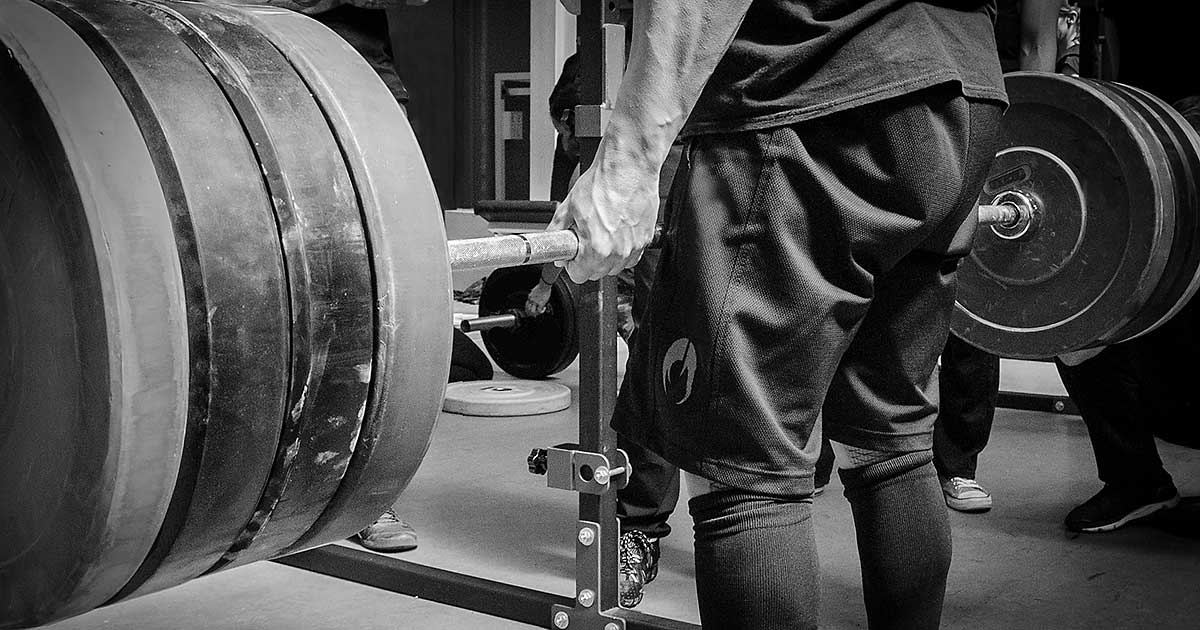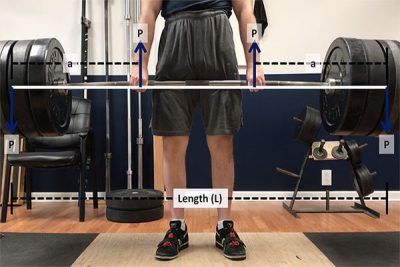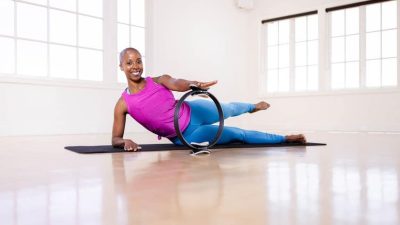
“We grow old and the young look at us and never see that once we made a kingdom ring for love.”—Uhtred of Bebbanburg
Turning fifty is a milestone in most people’s lives. A time to reflect on five decades of experience and on moments both good and bad. In the spring of 2024, with my fiftieth birthday looming just over seven months away, I decided to sit down and come up with some concrete goals to accomplish in my fiftieth year of life.
The goals were as follows:
- Test successfully for my StrongFirst Elite status.
- Accomplish a 56kg bent press with both arms.
- Deadlift three times my bodyweight, with both the conventional and sumo stance.
This article will focus on how I trained to pull three times my bodyweight with both stances at the lightest bodyweight I’d registered since my sophomore year of high school.
Why Train Both Stances?
There are a lot of misconceptions about the sumo deadlift and whether it’s some type of “trick lift.” I assure you it isn’t. I have always been a firm believer in the notion that you should be strong in both the sumo and the conventional deadlift and that training one will improve the other. Louie Simmons was also a big believer that training both would strengthen your weakness in each stance.
Once I decided on my goal, I sat down and came up with a plan. Having trained since 1986, I have a solid idea of what works best for me and how to get the most weight moving. I decided to go back to the same plan I followed in 2009 that allowed me to deadlift 331kg/730lb sumo and 317kg/700lb conventional. That plan consisted of a conjugate (aka Westside) approach to training. I trained six days a week and my training week looked something like this:

The Program
I chose a series of ten exercises, that I would rotate each week.
- Sumo deadlift
- Conventional deadlift
- Sumo deadlift off the wagon wheels (4” elevated pull)
- Conventional deadlift off the wagon wheels
5. Sumo deadlift vs. light bands (bands attached to the floor adding 15.8kg/35lb at the bottom and 32.6kg/72lb at the top of the lift)
6. Conventional deadlift vs. light bands
7. Reverse band sumo deadlift (light bands strung from a pullup bar over the deadlift bar)
8. Reverse band conventional deadlift
9. Deficit deadlift (standing on a 3” mat)
10. Speed deadlift: 12 pulls done with 60% of your max deadlift with light bands adding resistance
On my deadlift day, I would pick one of the ten deadlift variations and build up to a training max.
A training max is by no means a true max. It simply means a weight I could perform on that day without failing. I would guess that on any given Wednesday, I was performing a deadlift variation somewhere between 85-95% of my true max. I always left “some in the tank” so to say. Because I had no set day that I was going to perform a deadlift max, I was able to take my time and patiently move my numbers up week to week.
The good thing about the conjugate system is that it allows you to train at 90% or higher each week without burning out, due to the rotation of exercises. Because you are always training for the goal of hitting a heavy one repetition max, it makes the goal of hitting a big single easier, because your body is used to straining on a weekly basis.

A Typical Training Session
A typical training session for the deadlift would consist of triples and singles. Weight jumps were large at first, jumping by 40kg for the first few rounds and then 20kg until I was near my max for the day. I would perform triples until the weight would become difficult, then switch to singles until a max lift was performed for that day.
The following is an example taken from my training log.
Sumo deadlift off wagon wheels:
- 61kg (135lb) 2×3
- 102kg (225lb) 2×3
- 142kg (315lb) 2×3
- 183kg (405lb) x3
- 224kg (495lb) x1
- 247kg (545lb) x1 (with belt)
- 272kg (600lb) x1 (with belt)
I would double the sets with lighter weights to make sure I was warm, and my form was dialed in before moving to my heavy sets. This also gave me a chance to add more volume safely.
My rest periods were three to five minutes between sets to make sure I was fully recovered for the next lift.
There are some things to consider when training in the conjugate system. The first thing is that some extra work must be done to address specific weaknesses in your body that may cause you to miss your lifts.
For example, after years of training I know that my quads are a major issue that needs to be addressed any time I’m pushing a lower body lift. To combat this weakness, I added in a back squat day on Sunday mornings. I used a die roll to determine the rep scheme each week. Whatever the dice showed would be the number of reps I would do that day.
While not traditionally a weak point for me, I knew that training my posterior chain was an absolute must. This is why I added several days of heavy kettlebell swings, Ukrainian deadlifts, leg curls with bands, good mornings with various stances and Romanian deadlifts with heavy kettlebells. I would rotate these exercises each session.
I also started using the reverse hyper machine daily. I would do 3 sets of 10-20 reps and rotate between heavy low rep days and light high rep days. Finally, I started to work my neck with a harness seven days a week doing 3 sets of 10 with a 20kg kettlebell attached to the harness. With the addition of neck work, I was now training the muscles surrounding my spine from top to bottom and hitting those muscles several times a week, if not daily.
I also did heavy abdominal work: side bends, standing ab crunches with bands, and ab wheel rollouts. I was also getting a lot of trunk work from the bent press.
A note on speed work.
Traditionally a conjugate/Westside split would break the week into four training days. Lifters would perform a max effort upper and lower body day and a speed upper and lower body day. These speed days are called the dynamic method days. During this cycle, however, I chose to only do speed work at the end of my ten-week cycle. I chose to do this because I am a very explosive lifter. I either make the lift quickly or not at all. I needed to focus more on my grinding strength, so speed work was cut from most of the program.
As I moved through the spring, I noticed a major difference in the way my weights were coming off the floor. They were feeling easier, and I had to force myself to follow the plan and not push the deadlift variations. I always had a plan for the day and would bump my max in each variant by a few kilos each week. I had to keep telling myself to save my body for the real challenge.
My bodyweight at the beginning of the cycle was about 90kg and I intended to get it down in the 80-82kg range by the time it was time to test my deadlift. I knew that a ten-kilo drop was not an issue and didn’t push the weight loss until I was about a month out from attempting the lifts. As I approached the end of my last nine-week cycle of deadlift variations, I decided that I would take my shot.
The Test
The Wednesday before I attempted the max deadlifts, I checked my bodyweight and saw that I was 84kg. Exactly where I needed to be. I went into a slight calorie restriction for the next week and with the help of some intense sauna sessions, I got my weight down to 82kg the day before I was scheduled to attempt the pulls.
The day of the test I slept and recovered very well. I felt rested and confident to begin my session for the day.
I decided I would do two sets at each weight leading up to the max, one set sumo followed by one set conventional.
My warmup looked like this:
- 61kg (135lb) 2×3
- 102kg (225lb) 2×3
- 142kg (315lb) 2×1
- 183kg (405lb) 2×1
- 224kg (495lb) 2×1
After warming up I loaded 249kg (550lb) on the bar and waited about five to seven minutes. I took my first attempt with the sumo technique.
The weight felt light and came off the ground very easily. I locked it out and finished the lift.
I waited a full ten minutes before the conventional attempt and was able to complete it easier than the sumo pull.
What I Learned
I learned a few things from the pursuit of this goal.
First, patience is key. I had to take my time and not push too early. There was never a need to go higher than a 90% effort in training. We only have so many heavy lifts in us and there is absolutely no need to waste them. Save it for when it counts.
I also learned to keep the goal to myself. Only a few people knew that I was planning a three-time bodyweight deadlift, and no one knew that I was planning on attempting it with both techniques. There is a school of thought that says you get the same dopamine effect telling people what you plan to do as when you actually accomplish the goal. Keeping the goal a secret made achieving it that much more important. Work in silence and smash those goals.
Finally, training to hit a heavy max at age fifty is entirely different than attempting it in your thirties. Patience is key, as well as being willing to listen to your body. Rest when you need to and find ways to fix injuries rather than working through them. Recovery is so important and often overlooked. We spend so much time pushing ourselves that we sometimes miss the fact that our bodies are not machines and need to be cared for if we want them to perform when it counts. Time in the sauna, massages, cold therapy, stretching, the hot tub, mobility work, and inversion were all very important to reaching my goal.
I’m looking forward to the fifty first year of life and a new deadlift goal. I’m not going to talk about it though, you’ll have to stay tuned.
At StrongFirst we are experts at making the weak strong
and the strong stronger
Learn professional grade lifting skills with the








